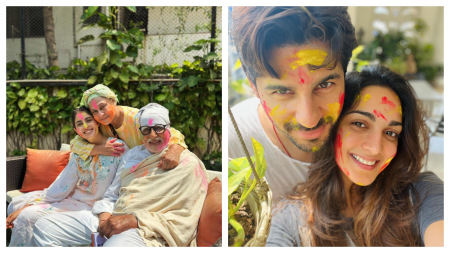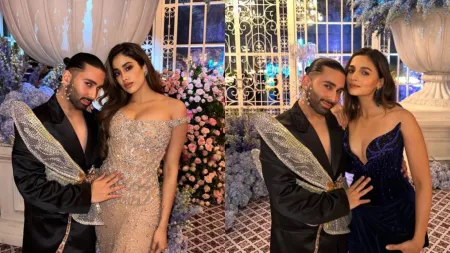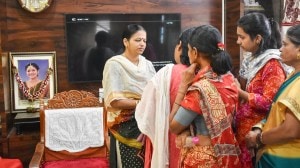- India
- International
A fly, a daayan, a nagin: The ‘women’ who dominate Indian TV
The women that currently dominate Indian television — A fly, many daayans, not to mention the snake-woman on top of the TRP charts.
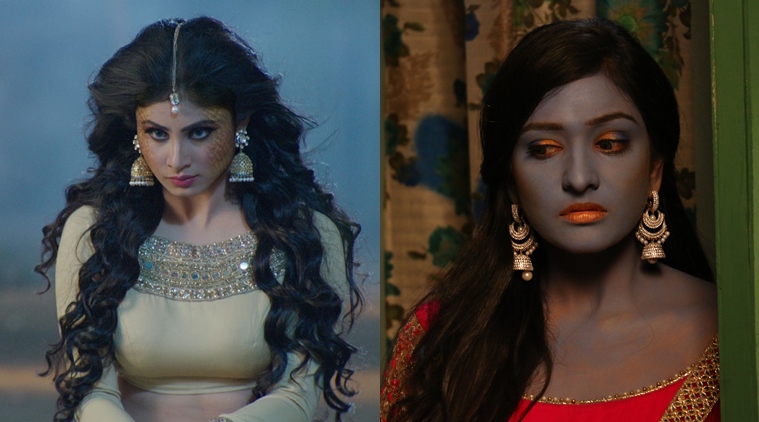 As Sasural Simar Ka creates history on Indian television, a screenwriter looks back on how bizarre became the new normal on the small screen.
As Sasural Simar Ka creates history on Indian television, a screenwriter looks back on how bizarre became the new normal on the small screen.
Overheard a few months ago at a channel: aaj kal TV pe creatures bahut chal rahe hain. At that very moment, they were on television: a vampire, multiple snake-women, daayans, chudails and what-have-you, but the line would still prove to be prophetic. Because unless you’ve been living under a rock with an ample supply of Hit spray, you can’t have missed the latest promo of Sasural Simar Ka (Colors) in which the titular character turns into a house-fly.
Even as viewers reel in shock and amusement, those of us from within the TV industry turn a bit red in the face, shrug and say: well, once you’re done with the other beings, a fly on the wall is the next logical choice, right?
Wrong, if you’ve read any of the umpteen blogs that curse current TV content. These blogs are mostly odes to the golden age of television —1990s to the early 2000s — a time when all was reasonable, when no one wore lipstick to bed, when being Rajasthani did not mean you addressed all and sundry with the suffix sa, including Simar the fly as Makkhi-sa. So how dare TV producers and writers lose the plot, ask these bloggers indignantly. Agreed, the transition from life-like to bizarre hasn’t been exactly smooth. There are reasons, though.
Flashback: Cable TV in the 1990s mostly meant Star and Zee TV. A lesser reach meant fewer people had access to these channels, and they mostly belonged to urbane India. Which meant Navneet Nishan’s Tara could be promiscuous, R Madhavan on Banegi Apni Baat could ditch priesthood for love, and so on. As the number of shows and channels began to increase, TV’s reach expanded and more people from smaller towns tuned in. A new demographic emerged, the kind that wanted a good story but also values. And so dawned the age of ‘K’ and the family saga, courtesy Ekta Kapoor.
Business meetings were abandoned for baingan ka bharta, mergers now meant marriage and Tara turned into the worship-worthy Tulsi. Did it pay off? Well, the night Mihir Virani returned from the dead, Kyunki Saas Bhi Kabhi Bahu Thi scored a staggering TRP of 22 points. There, I said it. The three-letter catchword: Television Rating Points.
Every bahu worth her sweat, tears and sindoor, had her share in the TRP-pie. TV turned from realism to this slightly-unbelievable zone where people married multiple times (to save the family or company from sure destruction, to provide a father figure for their children or because the spouse was dead) but retained their sexual purity, others returned from the dead, still others returned with a different face, and there was no looking back.

About six years ago, which was when this writer joined the industry, TV had already evolved into the slow-burn. If the K-soaps concentrated on character-building with the occasional shocker thrown in, they took their time telling a story. I have to admit, this was a fun phase. Every average heroine, be it Akshara of Yeh Rishta Kya Kehlata Hai (Star Plus) or Sandhya of Diya aur Baati Hum (Star Plus) , had a sorted to-do list: she could have a dream but marriage came first, solved all possible romantic/domestic problems, and procreated before embarking on her dream if it wasn’t already forgotten. Character was still the hero of the story. That’s why when the illiterate Gopi Vahu of Saath Nibhana Saathiya washed and scrubbed her husband’s laptop till it shone, even wrung it out to dry, the repercussions went on and finally culminated a whole year later, when she was enrolled in school.
The most crucial tip given to me when I started out: the more messed up the hero and his family, the greater time consumed by the heroine playing Miss Fix-It, the farther their consummation — hence, best-case scenario. There was drama, sure. Grooms and brides got switched under the sehra and ghoonghat but all of it was milked dry.
But a couple of years ago, the saas had been won over, the husband been mated with, children borne, and the daily soap had to deal with bahus without a cause. What next? Simar took the brave plunge by bringing in a snake-woman. Curse it if you will, but it worked. And so they moved on to toothier pastures with daayans, shaitans, paatali devis, you name it. Other shows may not have completely followed suit, but they have, in essence, borrowed the idea. The current Indian TV heroine’s to-do list is more unpredictable. A stammer? Too bad, first deal with the ticking time bomb at the dandiya function. Done fighting the daayan in the storeroom? Great, fight her mother. Done? Super, move on to the fly: no, wait, that’s you.
But ultimately, I’d like to say this in all honesty and some cynicism. TV has become more about plot and steroid now; yes, writers tire of it too. Character graphs have become rarer, every third episode needs a booster dose of the bizarre: for example, Yeh Waada Raha which looked like Daddy Long Legs suddenly came up with the raaz of the talking-doll; Qubool Hai turned to vampires in its last generation leap, while Mita Vashisht did a jal-jhap half-sitting inside a glass tank in Kaala Teeka. The more bizarre the visual, the more curious the audience, the higher the rating.
Otherwise would Ekta Kapoor’s Naagin start at the top and remain on top all these months? To be fair to snakes and mongooses though, Naagin was always meant to be a campy finite supernatural thriller. As for those who complain that this isn’t what they want, well, apologies, but they’ve long stopped being the audience. Channels and producers work according to market surveys. The first episode of a show, the pilot, is shown to a sample audience and feedback gathered. Even after shows go on air, channels conduct continuous research to find out what the audience likes. The one word I’ve come across the most, which also rankles, is seekh. Viewers, we are given to understand, largely appreciate shows and protagonists that provide them with aspirational values. Umm, no, the fly doesn’t provide such values, but Simar’s perseverance to get back to her human form will.
Lastly, to make an assumption of the makers’ lack of intelligence or conviction would be utterly wrong. It takes a certain cynicism, a lot of conviction and some self-deprecating laughter, to put a fly out there, or transform Rajat Tokas into Mongoose Man (Naagin) day after day. So until the next big experiment works on the idiot box, keep that fly repellent at bay because bizarre is here to stay.
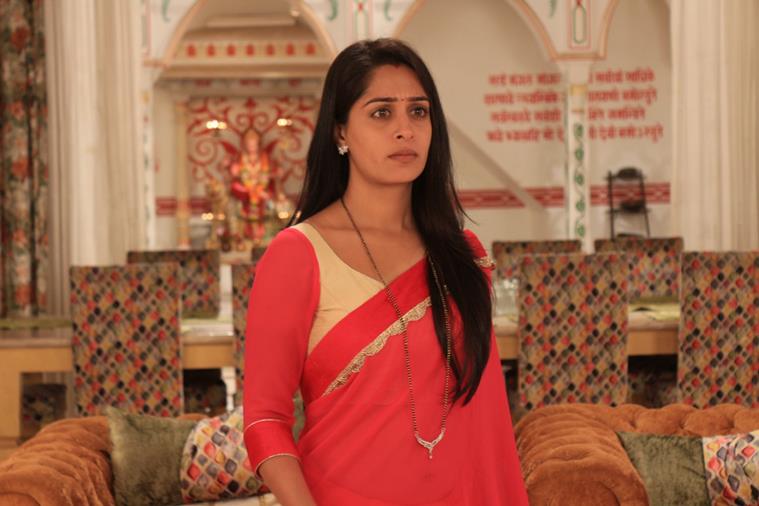 Kyunki makkhi bhi kabhi bahu thi: Dipika Kakar as Simar (top) was no competition for the Musca domestica.
Kyunki makkhi bhi kabhi bahu thi: Dipika Kakar as Simar (top) was no competition for the Musca domestica.
BELIEVE IT OR NOT
Impossible is nothing on Indian television. Here’s why.
In 2010, a five-minute video from the Star Plus show Saath Nibhana Saathiya went viral. It was from an episode where the daughter-in-law of the family takes over the responsibility of cleaning the husband’s laptop — by washing it. She soaps it, rinses it and puts it out to dry. While the video became as popular as Simar’s transition into a fly, let us remind you that it wasn’t a first. A character on Star One’s Rang Badalti Odhani had done just what Gopi vahu did, merely two weeks ago.
Qubool Hai (Zee TV) was a rare show about the life of a Muslim family. It was meant to dispel the stereotypes regarding Islam through a love story. It turned into, erm, a vampire show after a 25-year leap.
You cannot beat Kaala Teeka, a show on Zee. The Jha family is cursed and the father is hell-bent on protecting himself and daughter Gauri from the curse. There is only one way to do this: bring home a human kaala teeka. So, a girl Gauri’s age is discovered, made to dress perpetually in black and hang around her to rid her of the evil forces at play.
So the biggest problem that has drawn a wedge between a daughter-in-law and her mother-in-law in Thapki Pyaar Ki (Colors) is that the former has a stammer. But let that not hold us back from talking about the episode where a character called Shraddha bends down to pray and rises up to realise she had placed her forehead on a stamp that read chor. Of course, wiping her head clean is out of the question, so she deals with it by wearing a monkey cap.
Yeh Hai Mohabbatein (Star India) was meant to be the 2 States of TV — a “sweet and loving” south Indian girl clashes and eventually falls for a north Indian khadoos. But in the bizarre twists and turns that the plot takes —and it is a show by Ekta Kapoor — the heroine finds herself battling a crocodile. She gets dragged in and her leg chewed on (think Khoon Bhari Maang). But when she is finally rescued, it is her hand that is bleeding while the leg seems fine. Perhaps they couldn’t afford to mess with the fancy sari?
How We Got Here
The early nationwide programming on Indian TV in the 1980s is considered the golden age, with shows such as Buniyaad, Hum Log and Yeh Jo Hai Zindagi. It was followed by Ramayan, which changed the landscape of Indian television forever.
In 1984, DD Metro introduced India to the concept of soaps, aimed at a city audience. There was Shanti, based on a child born out of wedlock; and Pachpan Khambe Laal Deewarein (1993) about a younger man in love with an older woman that paired Aman Verma with Mita Vashisht. Verma later went on to act in Kyunki…Saas Bhi Kabhi Bahu Thi and Vashisht was last seen in Kaala Teeka.
The economy opened up in the early 90s and cable TV was launched in India. The first to open shop were Zee and Star in 1992. The iconic shows of the time were Tara about four girlfriends, Banegi Apni Baat, and the family comedy Hum Paanch.
Ekta Kapoor started the trend of household dramas with Kyunki… and Kahaani Ghar Ghar Kii in 2000.
The next big trend to hit Indian TV was again Kapoor’s doing — romances. Her show, Kutumb, the first hate marriage on TV, triggered the era of romance. Star One, when it launched in 2004 as a youth fiction channel, made blowfans a permanent equipment on TV sets with shows like Geet and Iss Pyaar Ko Kya Naam Doon.
Rural India came to the forefront in 2008 when Colors launched with Balika Vadhu. Child marriage, education of girl child, working women and several other issues have been used as a backdrop for what have essentially been family dramas.
When competition and channels increased, it became difficult to score very high TRPs. Shows went on for months, years even. Yeh Rishta Kya Kehlata Hai that went on air in 2009 on Star Plus is still on.
The outlandish became the buzzword with Saath Nibhana Saathiya in 2010. The trend has continued and evolved into snake-women and, well, a fly.
Photos
Apr 26: Latest News
- 01
- 02
- 03
- 04
- 05






















